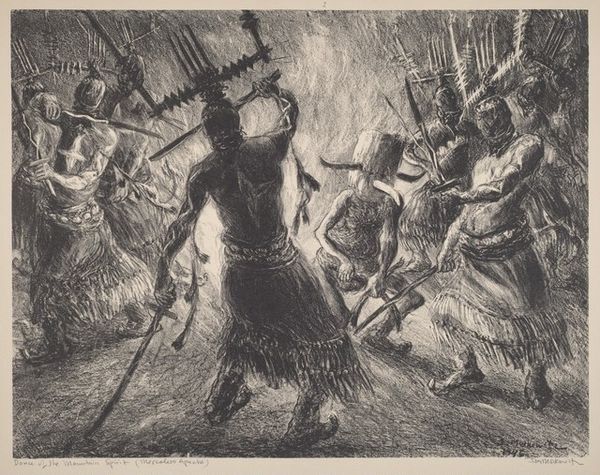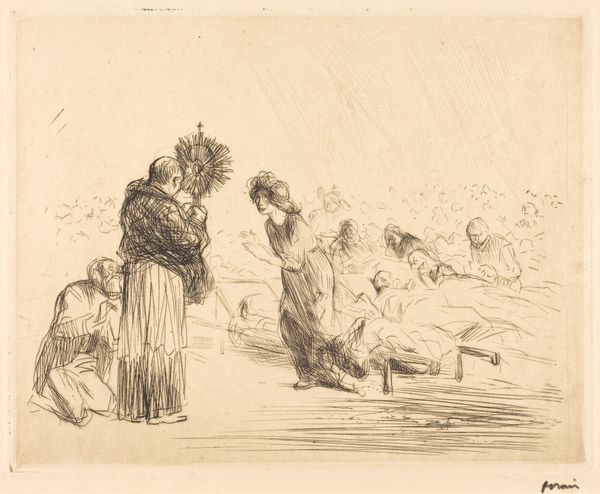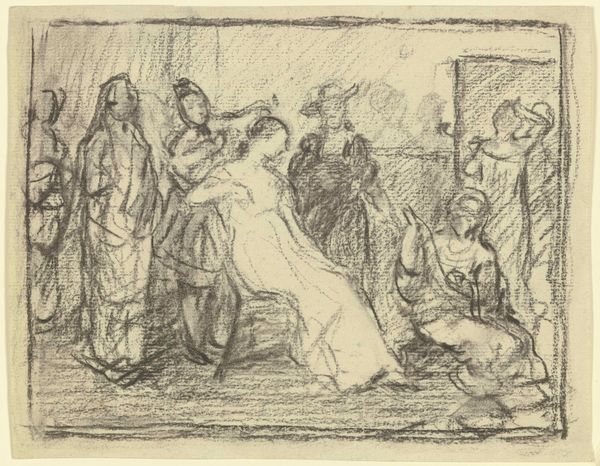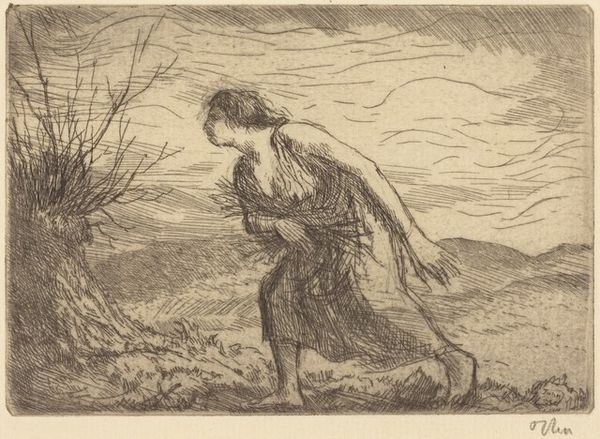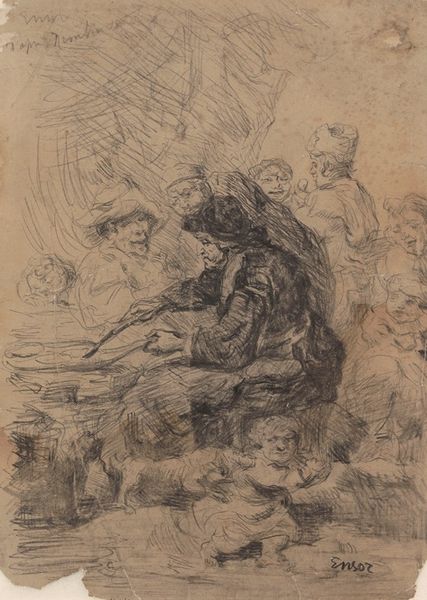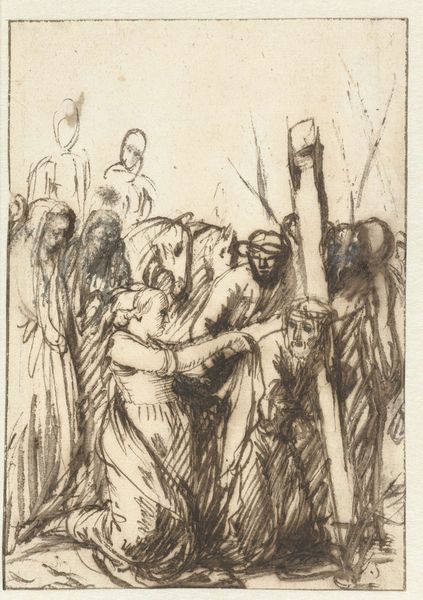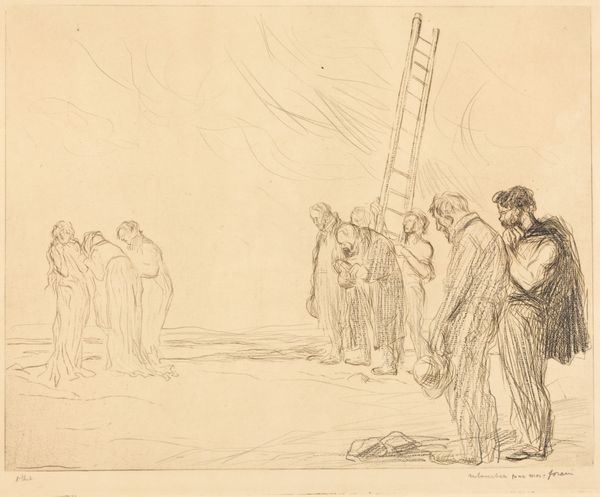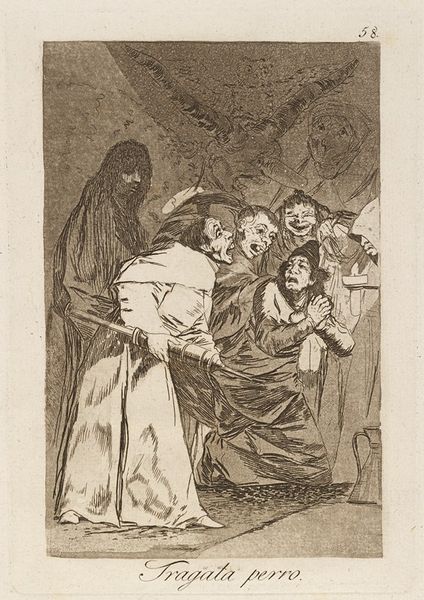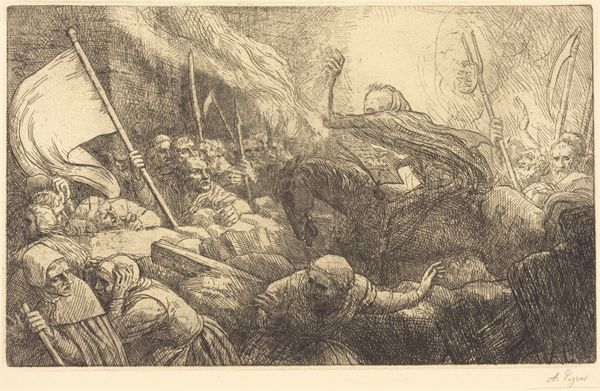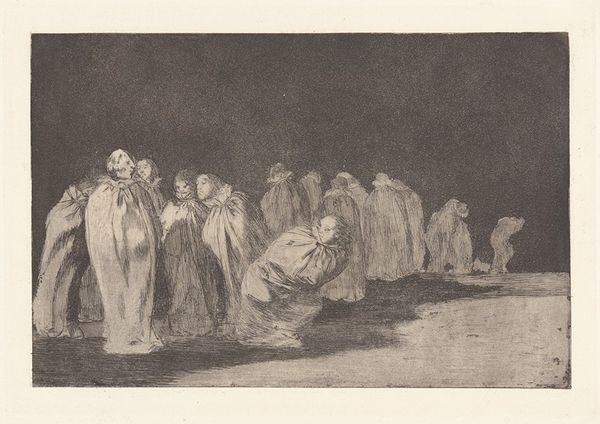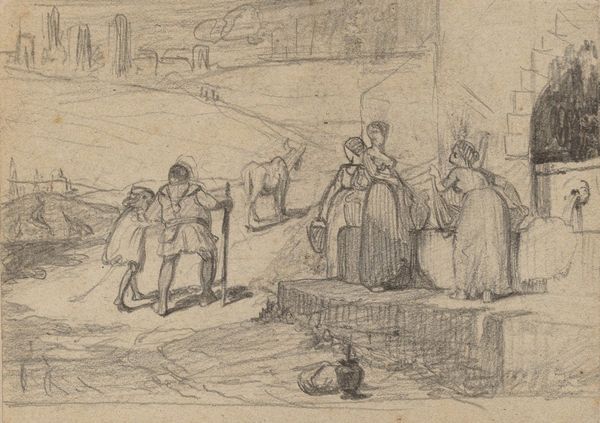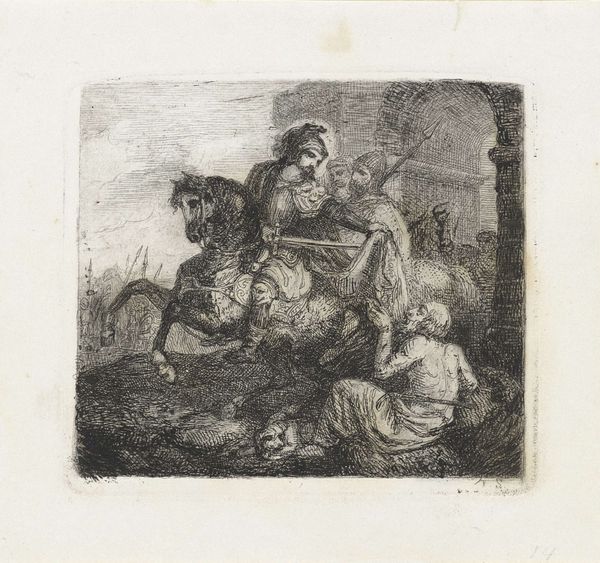
Copyright: Public Domain: Artvee
Curator: Looking at this image, I'm immediately struck by its somber tone and the evident suffering depicted. The sketch-like quality adds a layer of urgency, as if capturing a fleeting moment of profound importance. Editor: Indeed. What we’re observing here is a print called "Lourdes, the Miracle," created by Jean-Louis Forain between 1912 and 1913. The etching presents a scene associated with the famous Marian apparitions and healing site in Lourdes, France. Forain, throughout his career, frequently engaged with contemporary social issues. Curator: That context is key. Knowing it represents Lourdes shifts my understanding. The woman in the center, almost ethereal, becomes a focal point. Is she meant to embody faith or perhaps even be a representation of the Virgin Mary herself? The rosary beads hanging from her hands contrast sharply with the crutches and bodies scattered in the foreground. Editor: Precisely. These details open questions about accessibility and faith, drawing connections between societal structures, the promises of religion, and potential exploitation. Notice how the bodies, marked by disease and disability, are pushed to the margins, while the woman’s apparent health and vitality set her apart. Curator: I agree, the composition places her apart from those seeking solace. But also consider the gaze of those in the crowd; each face is subtly rendered, yet seems to reflect a sense of desperation, of hope. The piece makes me question power dynamics: who benefits from this spectacle and whose vulnerability is further exposed? Editor: Examining Forain’s motivations helps clarify. He walked a line as a satirical illustrator who both critiqued and benefitted from Parisian bourgeois culture. "Lourdes, the Miracle," challenges us to question the Church’s role, or the social implications for anyone promising miracles in a society burdened by industrialization and poverty. Curator: A fitting encapsulation. This etching isn't simply a depiction of a religious event. It is an invitation to examine the complex intersections of faith, hope, despair, and the ever-present forces that shape social experiences. Editor: Ultimately, Forain compels us to consider the sociopolitical dimensions underpinning events often framed as purely religious. His work endures as a potent reminder of the critical questions that art can raise, then and now.
Comments
No comments
Be the first to comment and join the conversation on the ultimate creative platform.
